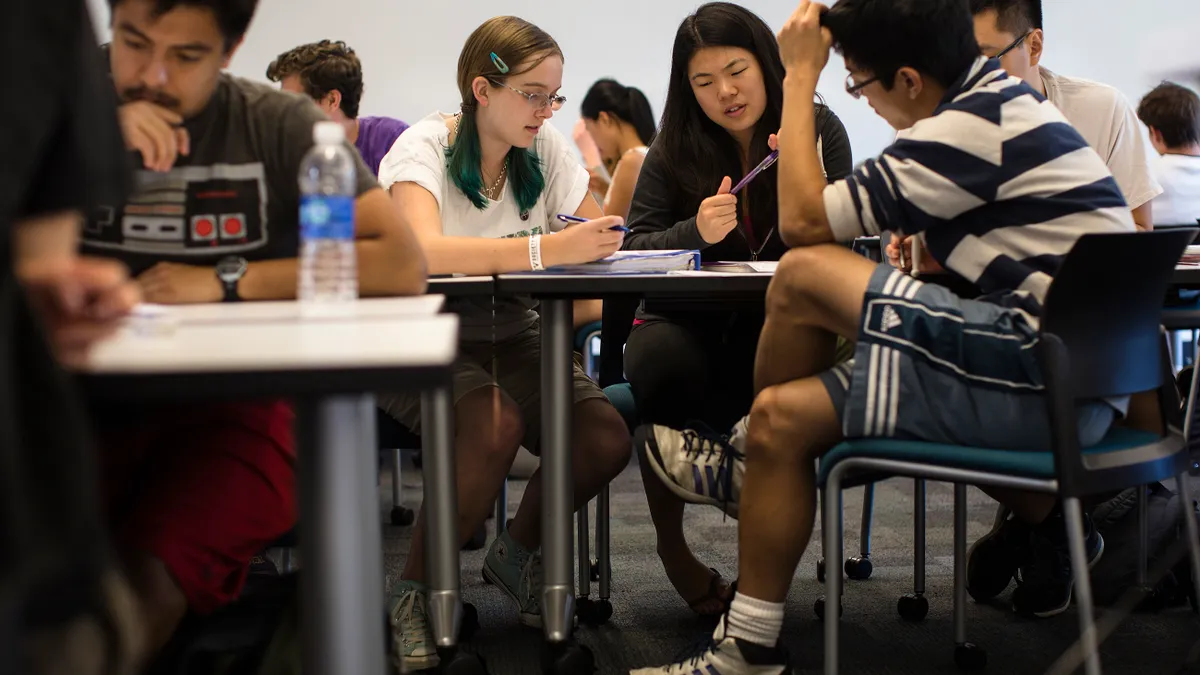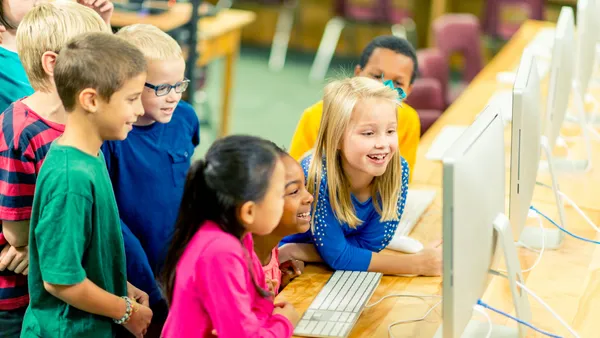When Principal Lourenco Garcia set out to transform Revere High School, he focused on structure. Revere, MA, about five miles northeast of Boston, is home to a large international population, with almost one-third of residents in 2010 identified as foreign-born in the U.S. Census.
More than half of Revere High School students are Latino, 51% are considered “high-needs,” and 34% are considered economically disadvantaged.
Garcia’s goal was a transformation. One key to the school’s future, he knew, would be making sure that his students were prepared for the 21st century with the technology skills they needed to succeed. He wanted to support a culture shift, and first he looked at structure.
The high school had 49-minute periods and Garcia spearheaded a shift to 85-minute blocks to give students and teachers more time in each class. He also promoted personalized learning, created spaces for teachers to collaborate, introduced professional learning groups, and created a Freshman Academy to help get new students on track.
“Once structures were in place and the culture was gaining momentum, that’s where the whole work around changing mindset, changing belief systems, making sure teachers understand their role in the classrooms, started to take place,” Garcia said at a recent Future Ready Schools summit near Boston.
From there, Garcia wanted to make sure teachers felt safe. They needed to know they would get the support necessary to succeed with innovative ideas. And they needed to know if good intentions led to failure, that would be understood, too.
By providing professional development, particularly in the lead-up to a 1:1 device initiative, Garcia was able to build unity around his vision. Student-centered learning communities helped teachers feel ownership over the transformation process and gave them a primary role in it. That was key.
“When you support teachers, they feel their work has been valued,” Garcia said. “They feel like they have a stake in it and then you have the buy-in. Don’t come with a heavy-handed approach, top down. It’s not going to work.”
In the Bristol Warren Regional School District in Rhode Island, Superintendent Mario Andrade sees professional learning communities as 24/7 commitments — not something to pay attention to during a scheduled meeting. In his district, PLCs are based on action research and they are results-oriented. Teachers collaborate to come up with action ideas and then proceed through short cycles of review and assessment.
In Bristol Warren’s “Future Ready” schools, PLCs provide a mechanism for tracking data and responding to it. If something is not working, teachers need to have permission to stop doing it.
Andrade said one of the elephants in the room when asking teachers to innovate is how it will factor into their evaluations. Administrators can’t ignore this. Teachers need clear expectations. At Bristol Warren, Andrade tries to provide them from the central office, and he also expects every classroom at every grade level to feel like a safe place to fail — for students as well as teachers.
In addition to readying his district to embrace innovation from the inside, Andrade has looked outward to community partners. The local chamber of commerce has helped the district redefine success. Business partners have opened their doors to student interns and started having conversations with school officials about what they’re looking for in future employees.
“We’ve talked about mutual expectations, mutual definitions of success,” Andrade said. “If you can have that operational definition, you eliminate a lot of the mixed messages and I think that’s really important.”
In Boston Public Schools, Sujata Bhatt is managing partner for innovation. A recent transplant from Los Angeles, Bhatt has spent the past few months mapping “bright spots” within the district and trying to figure out what can be scaled systemwide. She sees a mismatch between the thriving innovation sector in Boston and the structure of the public schools.
Thankfully, the district seems to have willing partners to help change that.
“We have a robust network of nonprofits in Boston that are interested in helping shift the ecosystem toward a more innovation-based economy,” Bhatt said. “It takes all these people working together.”







 Dive Awards
Dive Awards






